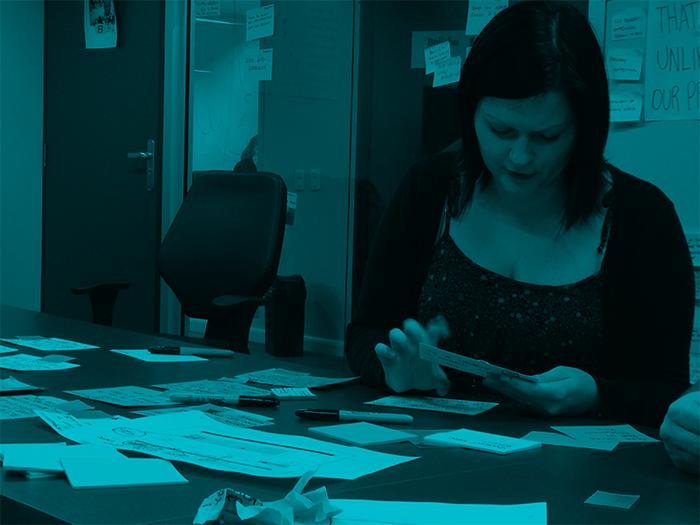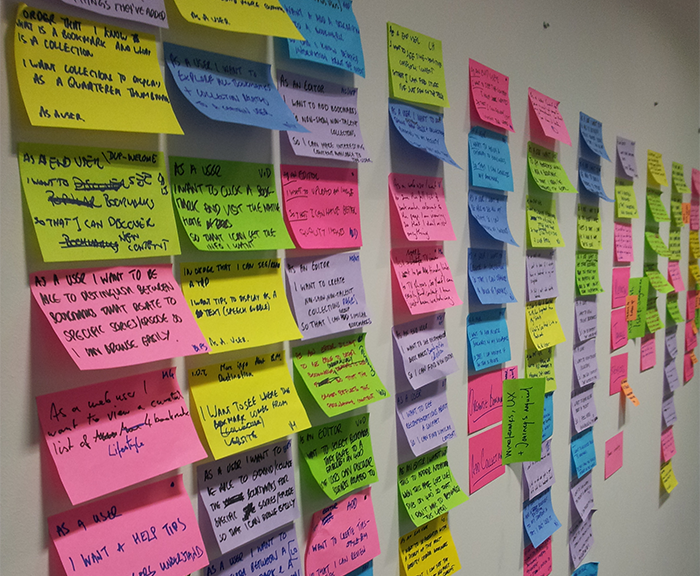
What Part Does Story Play?
We can’t separate the experiential story we create from the stories we’re immersed in.
I was surprised how popular the 22 rules of UX (adapted from Pixar’s 22 rules of storytelling) has been. The ‘rules’ were published here recently, and something around the storytelling theme seemed to resonate strongly with the design community. I was trying to figure it out — why do great stories make for great experiences? How do they play a part in the way we shape experiences and tackle design problems ?
Stories are inherently subjective—just like the experiences we create. We’re part of multiple story threads, and are constantly shaping storyworlds and telling stories. At any point in time we see the world through a particular lens — a lens made up of multiple stories and influences. We can’t separate the experiential story we create from the stories we’re immersed in.
What's your organisation's story? Sometimes you need to change this to change the experience.
Every organisation has its own story — the way it sees the world, it’s perspective, characters. An organisation’s story shapes the things it prioritises, the way it’s processes are structured, what it values and ultimately its approach to customers and creating experiences.
Some organisational stories are more conducive to creating better experiences. Stories that value employee autonomy, satisfaction and ideas are generally better at creating great experiences for customers. But what do you do if the organisational story isn’t built to create great experiences? How do you help people see another story?

The power of the experience design process is that we can give people a window to see outside the story they’re immersed in. Gently bring people to whatever validation or research you’re doing when you can. Involve them in your process. Help them get to the conclusions you already know through witnessing a different story — it makes people become champions of the process and they feel refreshed, inspired. It’s a subtle but world-changing power.
Story touches hearts and minds. You need to weave it to inspire and lift those around you to create heartfelt experiences.
There’s emotion and non-literal concepts contained in stories. When you tell a story you can communicate an experiential truth so that others can understand it — in a way that isn’t possible through literal description. It’s the empathy, the sudden heart-awareness or emotional connection that gets transmitted. It’s why storytelling is so powerful for inspiring people or communicating vision.
You can use storytelling to help people really see — feelingly see — a different reality, or future. When you’re trying to create a shift or total step change in experience this is really important. It’s hard for your team and stakeholders to get behind and create something they have no conceptual awareness of and you can’t impart that conceptual awareness through regular communication. As an experience designer you need to be able to story-tell the experience you are envisioning, to put the spark into the hearts of whoever is listening.
This usually means that elevator pitches aren’t very useful. I’ve found that they get bloated, off point, and designed by committee. A bloated, rigidly-structured elevator pitch makes you feel like you have a goal when you really don’t.
Future-visioning with your team is much more helpful in my experience. For those unfamiliar, this exercise involves engaging your team to close their eyes and bring to mind what the experience will look like when successfully complete. Most people are not aware of what they’ve written for this story until you ask them to call it to mind and put it on paper. Hearing these helps you understand what each of your team member’s future stories look like. Sometimes your team will have very limited stories, in which case you’ll need to story-tell and inspire with an alternate vision. Sometimes, though, you can be surprised by the fantastical tales your team dreams up.
Your research isn't just about narrow facts and data points. It's about the multidimensional story your user has. Find out what that story is.
When you’re trying to create something that sits comfortably within a real person’s experience, you need to know what that real experience is. What are all the contextual factors? What is their motivation? What are they trying to do, get out of it, and what’s the next thing? What’s the bigger picture of this story? You’ll never get this from surveys, market segments and so on — only from hearing from real people. You need to observe the story, and probe to find out what’s behind what you see and hear. It can be really hard to extract the real experience from people — because people are so great at telling you a censored version, what you want to hear and what they think they should say. Getting people relaxed, getting them to tell stories to each other, informal settings, stories of real past experiences are great ways to build an understanding of the complex story that people experience.
You're building a story with every visual design decision. But what kind of story are you telling, and who is listening?
When a user engages with an interface they’re taking in a story. The way the content is structured on the page, the cues and clues the elements give, the aesthetic character all come together to place the user in a context with a direction and a desire to do something.
Every decision made — from task flows to colour palettes will contribute to how a user viscerally responds to the interface. Even if you know what they’re trying to do, and the right button is there and people are able to find it in usability tests — do they want to? Sometimes utility isn’t enough. For example if a banking interface doesn’t appear credible or trustworthy this can impact users’ decisions to engage. The story the interface tells is more than the sum of its parts — more than just the task flow, the usability, placement of elements and color palette. The overall visual story has a huge impact on the experience.
What kind of story are you crafting for your team? What's their experience? Do you spread the gold dust around?
Designers have gold dust — we get to play with magic, beautiful things: post its, creativity. Other people naturally gravitate to this light and this most obviously shows up when stakeholders get over-involved in visual design, since it’s the most tangible design output. It can sometimes be really tempting to hold all this magic close to your chest — after all you’re the designer, why is everyone else trying to steal your thunder?

But what kind of story does this weave? What kind of experience can you create for customers if you can’t even craft the right experience for your team? Like I mentioned in 22 rules, I’m constantly amazed at the results when I open up and share the process with others, involve them and spread the gold dust around. It’s about bringing your team together around a single united goal - and giving them the framework and space to work together and with you to build out the vision. Bring your facilitation skills and empathy to work in those moments when your team comes together. It’s always complex working with other people and I’m learning from my mistakes every day, but we can bring our experience design powers to play at creating great experiences for our teams, for our clients, and for our users.
You have your own story. It shapes the experiences you create. Get to know it, so you can change it if you need to.
You have your own story — and it shapes how you view and interact with the other characters in it. Start to get to know it, so you can change it if you need to. This is something I always try to bring myself back to. It’s always really tempting to think our story is the ‘truth’. For me this can sometimes lead to conflicts, and make it really difficult for me to really listen to the stories of others.
Once you lock yourself into a particular story it’s hard to open up, it’s hard to see the other stories, and it’s hard to really listen. It’s funny that we can often suspend our story to really listen to users — during testing and research — but it can be really hard to suspend our story in day to day life. It’s often hard to really see our story though — once you’re inside it, you can’t see the walls, narrative structure, characterization. So it can be hard to see what’s motivating you, informing your decisions, interactions and plot. I’ve found that multiple avenues of ‘seeing’ it help. Getting feedback from others (how do they see your story?), quiet moments of meditation and reflection, being aware of emotional intensity (probe behind it — research techniques on yourself), and keeping a diary to start seeing patterns. Once you see parts of your story you can start unraveling them.
I hope some of these were useful and resonated with you. I’d love to hear stories from the field — related or not, and whether or not you agree with the above sentiments. Feel free to shout out on Twitter, or leave a comment below.
Acknowledgements:
Diana Adorno — for being a never-ending fount of inspiration and insight. A lot of these insights were helped along with her assistance — the stories she told and her heartfelt mentoring. Ray Grasso — for being a super-grounding presence. Never let me get too carried away in my own flights of fancy, it was refreshing to feel the earth under my feet and see the world from a new perspective.
Disclaimer: The statements and opinions expressed in this article are those of the author(s) and do not necessarily reflect the positions of Thoughtworks.














